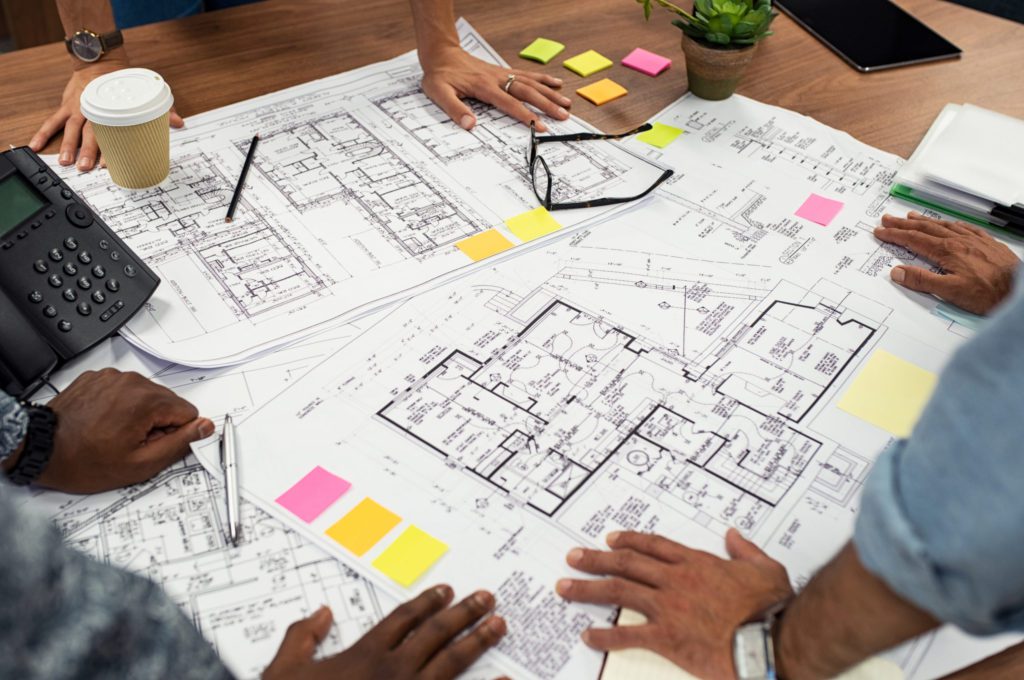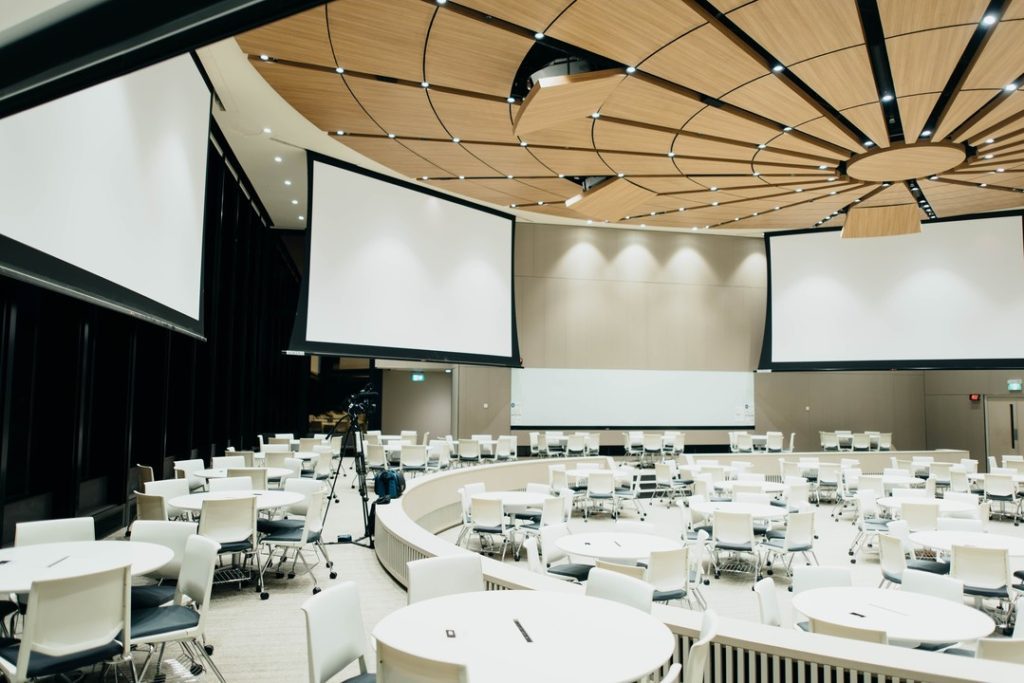You enter a meeting room, and there is a digital display waiting to bring video colleagues into the room. The room is ready to do what it was built for. That display–and the accompanying sound system–may seem like the final touch that makes the room purpose-built.
But if the room has been properly designed to host meetings with zero complications, this moment was in the planning almost from the beginning. There are so many factors that influence the effectiveness of meeting rooms’ infrastructure–and the effectiveness of the meetings they house–the variables must be considered in the original schematics.
This goes well beyond just indicating a few junction boxes and electrical drops. It involves consideration of the surfaces and their effect on audio quality. There are the placements of controls (and the wire channels to attach them.) There is screen placement relative to data sources, prospective seating arrangements, and even reflective glare. And there is always an adherence to a budget.
Whether it is new construction or reconfigured space, all these factors should be considered at the planning phase, before the first run of steel framing is laid down.
Workflow First
AV has become so integral with modern office workflow, it’s surprising how often it is treated as an accessory in the initial planning.
Of course, the most important factor is the people who will use the space, and how to help them accomplish their tasks with as few distractions as possible. But ask yourself: How likely are they to be using electronics to accomplish those tasks? The answer is that the people and their tech will probably be inseparable. A part of that tech will be the AV. And the AV will probably be the least adaptable once it’s installed.
(Mobile AV is an option, and a good one. Still, that should be part of the plan, not a remedy for inadequate planning.)
All this means you should design for the AV from the beginning. Or, more specifically, design for the way work will get done in the space. Which people will be accessing the AV? How frequently? What about informational displays in the common spaces? What about sales and promotional media where you meet with customers and prospects?
Once you’ve determined how you see workflow, you have a map for the tech to follow.
Gearing Up
While some space planners may save equipment specifications for the end, the smarter move is to spec out the equipment at the design phase. As we discussed in an earlier post, this is the best way to control costs and assure that the building design will accommodate the necessary AV components.
This step shouldn’t be interpreted to mean you will be designing around the AV. If the layout of the workspace has been optimized for efficiency, productivity, and creativity, the AV is only contributing to that plan. Specifying the equipment at this step simply assures that there will be appropriate accommodations for the controls, data sources, connectivity, and any other space planning and design considerations that are better handled with design software than with hammers and saws.
Identifying the right equipment at this stage also doesn’t mean it needs to be purchased. The technical specifications may apply to a range of vendors and equipment that can be refined during build-out.
Plans Made Plain
Now the plans can be finalized. Knowing what equipment is going to be where in the rooms, the designer can make better arrangements for sightlines and microphone positioning. Knowing the sound spread pattern may inform a choice of materials for optimal audio quality.
Huddle and conference spaces should tend to come together fairly quickly in any case. But, knowing the technical capabilities of displays or sound systems in common spaces may inspire out-of-the-box elements that give these spaces special distinction. While most space plans are 3D, working in the AV element early allows the designer to leverage the fourth dimension: time. Video displays allow movement and transformation. The designer can use this attribute to make these spaces vary during the day.
Some AV specialists are indeed most comfortable with schematics and wiring diagrams. But the best of them (ahem, such as AV-Tech) are just as comfortable with construction drawings and CAD files. That’s because the best of them (ahem, again) know that they’re not just planning for the AV, they’re planning for the people and the best work they can produce.



